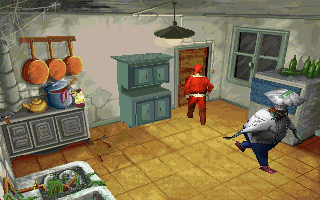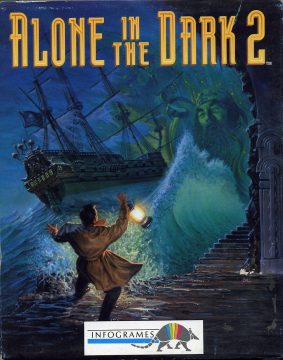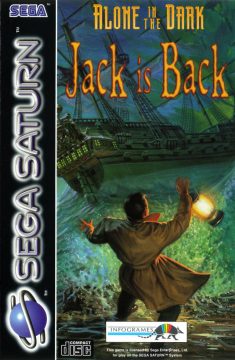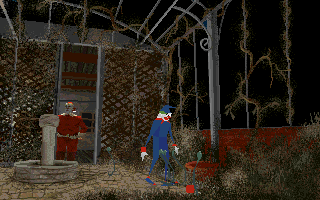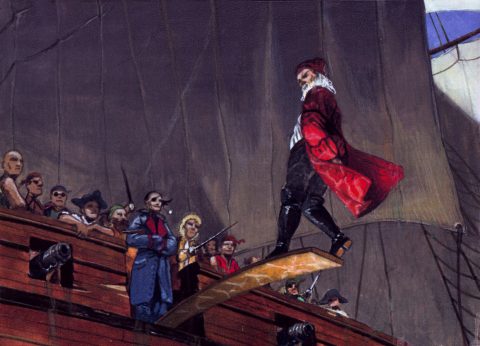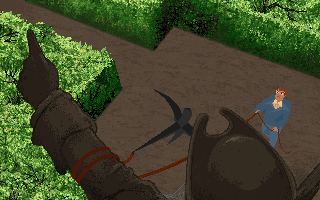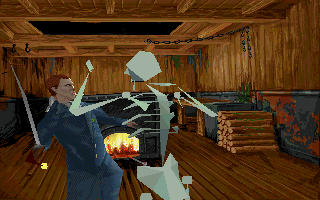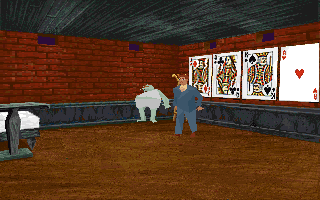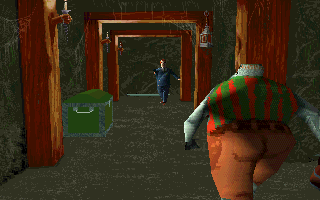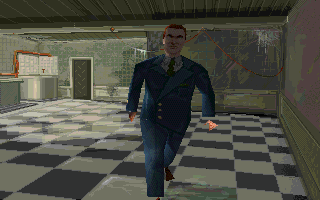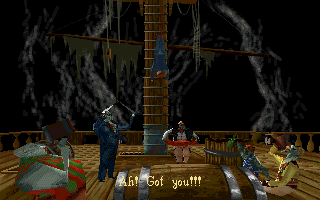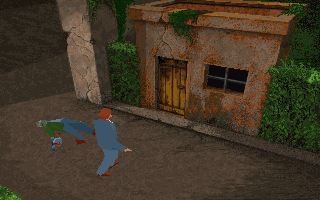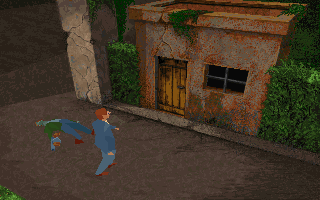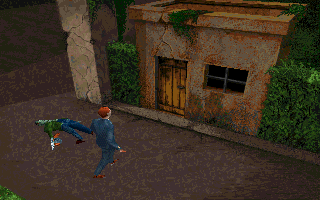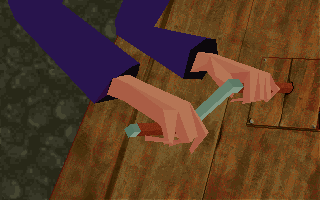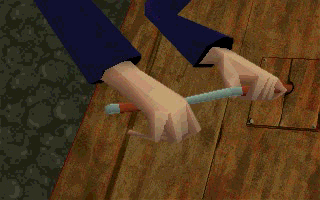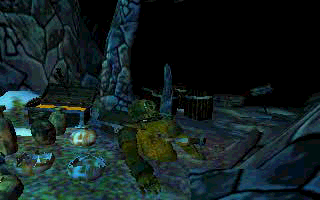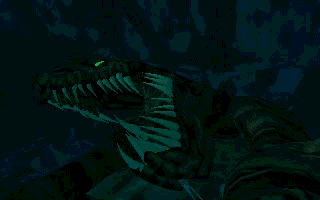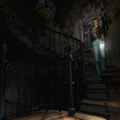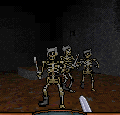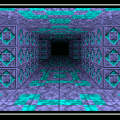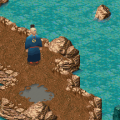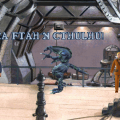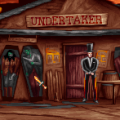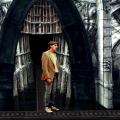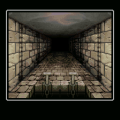Surfing on the success of the first game, Infogrames wanted to take a new direction with the franchise. Looking at the success of Wolfenstein 3D and the hype for Doom, the company decided to put the focus on action this time. The sequel runs on the same engine and still features Edward Carnby as the main character, but the setting and gameplay are quite different. Since the majority of the original team was gone, the sequel was put into the hands of Raynal’s assistant programmer from the first game, Franck de Girolami, who found himself pressed to assemble a new team and deliver a sequel, all within no more than seven months.
A few months after solving the mystery of Derceto, Carnby is now called a “Supernatural Private Eye” by the press, and investigates all sorts of strange cases. His mentor, Ted Stryker, mysteriously disappears after looking for Grace Saunders, an eight year old girl who went missing on Christmas Eve. Stryker was nosing around a mysterious bootlegger called One-Eyed Jack, who lives in a gigantic domain called Hell’s Kitchen. Immediately smelling something fishy, Carnby eventually blows up the main gate of the mansion to “investigate” the case. A far cry from the creepy, subtle introduction of Derceto, that’s for sure.
Once again, Chardot was in charge of the screenplay, but things obviously got out of control. The Lovecraftian touch has been completely disposed of in favor of a more dramatic turn. The plot starts as a simple rescue mission in a mansion full of shady frankenmobsters. Soon it turns out that they are actually undead pirates, and they intend to sacrifice Grace in order to prolong their immortality. Naturally, the quest ends as a dazzling swashbuckling adventure on a ghost ship.
As usual, the plot is distilled through various books and manuscripts that give hints about the pirates’ background and the ways to dispose of them. The writing is actually pretty good, but the wacky execution of the game completely erases the efforts of the screenplay, making the game a downright comedy at places. Some key points of the storyline like the tale of One-Eyed Jack are presented with gorgeous bande dessinée cutscenes. This idea was to be kept for later productions like Alone in the Dark 3 and Prisoner of Ice.
While the mechanics are exactly the same as in the first game, now the focus lies much more on combat. Finding the action menu trimmed down to just Fight and Push should be the first indicator that something’s changed. Even worse, much of it is ranged combat. The first part of the game takes place in the garden maze of Hell’s Kitchen, where you need to fight your way through hordes of Thompson-wearing goons. The controls are clumsy at best, terribly unsuited for the task at hand, and force you to corner every enemy to avoid being stun locked by the automatic firearms. This whole section is tedious and having to cope with it from the get go is probably the worst game design decision in the whole original trilogy. As De Girolami told Retro Gamer, the team was well aware of these issues at the end, but Infogrames wasn’t really concerned about tweaking the game: “The focus back then was to capitalize on the success of the first game as soon as possible, not to maintain its quality level.”
The rest of the game is much more enjoyable, and more puzzles make a welcome return in the second half. But the image most remember from the game would probably be Carnby dressed as Santa Claus murdering zombie dwarf cooks with frying pans. For whatever reason, Carnby needs to use this Christmas disguise to run around the mansion undetected… for a few seconds only, after that the murdering of the undead resumes. On the plus side, the double-tap for running now works properly.
Around the mid-point of the game, Carnby gets captured by the pirates’ voodoo witch, and little Grace Saunders has to bust him out. Grace is cute as a button, but as an innocent kid unable to threaten the centuries-old zombie pirates. Only her wits help her to dispose of the guards, often in a very funny way. It’s a nice touch that Resident Evil 2 would use a few years later with Sherry Birkin, and a refreshing change of pace from all the killing done as Carnby. The puzzles themselves are pretty easy after finding the hints that usually come right before they’re applied. But no worries, after that Carnby gets to slaughter more pirates for the endgame. The adventure is also much more linear than before, exponentially increasing the possibilities to screw up your game because of missed items.
Strangely enough, the soundtrack of Alone in the Dark 2 is the only known composing work of Jean-Luc Escalant, actually an expert in bio-technology. The music is a fairly enjoyable mix of catchy, old-fashioned pirate tunes and Christmas-y songs. The sound effects, especially the digitized voices of the goons are awkwardly funny, too.
Technical improvements were subtle, but powerful: The 2D backgrounds now could be animated, resulting in many fleeting critters flitting across the screens, and whereas the first game never put more than two or three monsters in once scene, Carnby and Grace now have to face whole bunches of pirates at once. Enemies announce their presence by shouting at the player, further stressing the action before horror approach.
In the end, Alone in the Dark 2 isn’t a bad game, but has hardly any real links with the first game. The feeling of constant absurdity and wackiness prevents any horror atmosphere or sense of mystery, and AitD 2 is much more funny than it is scary. The endless fighting and botched balancing, however, remain the real drawbacks of the whole experience.
This time around, the 3DO version caught up with the computers and displays the graphics in their original resolution, only minor models like weapons and items are still slightly simplified. The real attraction are the PlayStation and Saturn versions, though. The backgrounds remain the same as the original, but all characters are fully textured, making them look much less abstract. Some characters are also somewhat redesigned in the process; especially Edward Carnby is barely recognizable, lacking his trademark mustache.
Some FMV rides have been added as transitions between sections, like a landslip that makes Carnby dive under the ocean, past sunken treasures and dead explorers… only for him to end up in the mansion’s catacombs. They’re entirely pointless, but apparently you’d just had to have some if you wanted to port a PC game to the PlayStation in 1996. For inexplicable reasons, some of the perfectly fine in-engine cutscenes are also replaced by pre-recorded FMVs, leaving them with ugly fragments and – most hilariously – often with the flat shaded character models from the PC version. The 32-bit versions also finally offer three difficulty levels for the combat, and on the lowest one, the opening part is actually manageable without saving and reloading a hundred times.
Comparison Screenshots
Playstation FMV Screenshots
